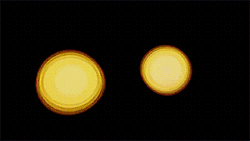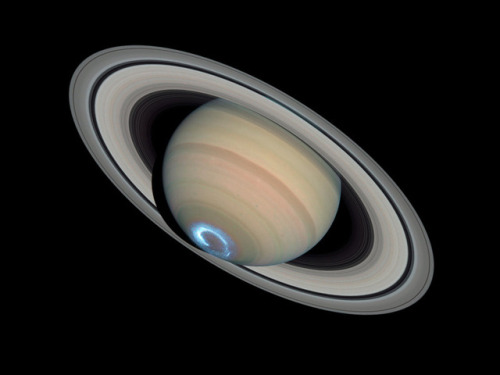Planets I Learned About Via Youtube While Procrastinating My English Essay
Planets i learned about via youtube while procrastinating my english essay
Planet 55 Cancri e is basically a giant diamond. like the planet is a diamond. and it would be worth $26.9 nonillion
Planet Gliese 436 b is an ice planet that is constantly on fire do to its close proximity to its parent star. the ice doesn’t melt bc the planet’s gravity is so strong it physically prevents the ice from melting
Planet HD 189733b rains sideways glass…. constantly
Planet J1407-B has planetary rings that are 200x the size of saturn. if saturn’s ring were as big as J1407-B’s we’d be able to see them with our naked eye from earth AND they would dominate our sky and look larger than a full moon
Planet Wasp-12b rotates so close to its parent star that its slowly being consumed by the it
Planet Gliese 581c is one of the candidates for a planet that can support life however it orbits a tiny dwarf star and is tidally locked so one side is constantly subject to immense sunlight while the other is constantly in darkness. there’s a small area of the planet however, that is just the right temp to support life. u just can’t step out of said area. the skies are red and the plants would have be a black color instead of a green bc they would use infrared light for photosynthesis. (a message was actually sent to the planet in 2008 in hopes that there’s life on the planet but the message wont reach the planet until 2029).
Planet GJ 1214b is a water planet nicknamed “water world” is has no land at all and the water is so deep it goes down miles all the way to the planet’s core.
Planet Wasp-17b is the largest planet discovered thus far. its so large its existence contradicts our understanding of how planets are formed. and it has a retrograde orbit, so it orbits in the opposite direction of its parent star.
Planet HD 188753 has 3 suns you should have triple shadows and there would be almost daily eclipses. and no matter which direction u face on the planet u would always see a sunset
Planet HD106906b is the loneliest planet discovered thus far. its known as “super jupiter” bc its 11x bigger than jupiter. it orbits its parent star at a distance of 60 billion miles (which is v strange) hence why its the loneliest planet.
Planet Tres 2b is the darkest planet known. it reflects less than 1% of light (it reflects less light than coal and black acrylic paint). the tiny part of the planet that does reflect light is red making the planet glow a dim red.
More Posts from Saients and Others

Technology then and now
![😈 [http://bit.ly/2jn9ubb]](https://64.media.tumblr.com/ebde61c0c9935f4410f79478088a407f/tumblr_oklt3fWSa31s04h2ho1_500.jpg)
😈 [http://bit.ly/2jn9ubb]


A star created 1,800 years ago after the collision of two distant suns is set to appear in the night sky for the first time – as the light from the crash finally reaches the Earth.
Scientists predict that for six months in 2022, stargazers will be able to witness the birth of the new star, by fixing their telescopes near the Pisces and Cygnus constellations. Dubbed the Boom Star, it has taken nearly two millennia for its light to reach earth — where it will be able to be seen by the naked eye. Astronomers expect the collision to increase the brightness of the pair ten thousand fold, making it one of the brightest stars in the heaven for a time. The explosion, known as a Red Nova, will then dissipate and the star will remain visible in our skies as a single bright, but duller, dot.
Your not going to want to miss this appear in our sky as it’s a once in a lifetime event! Source

The Shepard-Risset Glissando
A Shepard tone, named after Roger Shepard, is a sound consisting of a superposition of sine waves separated by octaves. When played with the base pitch of the tone moving upward or downward, it is referred to as the Shepard scale. This creates the auditory illusion of a tone that continually ascends or descends in pitch, yet which ultimately seems to get no higher or lower. It has been described as a “sonic barber’s pole”.
Jean-Claude Risset subsequently created a version of the scale where the tones glide continuously, and it is appropriately called the continuous Risset scale or Shepard–Risset glissando. When done correctly, the tone appears to rise (or descend) continuously in pitch, yet return to its starting note. Basically, it’s a continuously descending tone that never gets any lower. It’s the acoustical version of M.C. Escher’s Penrose Stairs optical illusion. Source.
Doesn’t it sound a little bit creepy?










Newest LIGO Signal Raises A Huge Question: Do Merging Black Holes Emit Light?
“The second merger held no such hints of electromagnetic signals, but that was less surprising: the black holes were of significantly lower mass, so any signal arising from them would be expected to be correspondingly lower in magnitude. But the third merger was large in mass again, more comparable to the first than the second. While Fermi has made no announcement, and Integral again reports a non-detection, there are two pieces of evidence that suggest there may have been an electromagnetic counterpart after all. The AGILE satellite from the Italian Space Agency detected a weak, short-lived event that occurred just half a second before the LIGO merger, while X-ray, radio and optical observations combined to identify a strange afterglow less than 24 hours after the merger.”
Whenever there’s a catastrophic, cataclysmic event in space, there’s almost always a tremendous release of energy that accompanies it. A supernova emits light; a neutron star merger emits gamma rays; a quasar emits radio waves; merging black holes emit gravitational waves. But if there’s any sort of matter present outside the event horizons of these black holes, they have the potential to emit electromagnetic radiation, or light signals, too. Our best models and simulations don’t predict much, but sometimes the Universe surprises us! With the third LIGO merger, there were two independent teams that claimed an electromagnetic counterpart within 24 hours of the gravitational wave signal. One was an afterglow in gamma rays and the optical, occurring about 19 hours after-the-fact, while the other was an X-ray burst occurring just half a second before the merger.
Could either of these be connected to these merging black holes? Or are we just grasping at straws here? We need more, better data to know for sure, but here’s what we’ve got so far!
-
 ruthlesslysoft liked this · 2 weeks ago
ruthlesslysoft liked this · 2 weeks ago -
 thelongestway liked this · 3 weeks ago
thelongestway liked this · 3 weeks ago -
 kurovera liked this · 4 weeks ago
kurovera liked this · 4 weeks ago -
 scrubyourheart liked this · 1 month ago
scrubyourheart liked this · 1 month ago -
 sharp-skates reblogged this · 1 month ago
sharp-skates reblogged this · 1 month ago -
 sharp-skates liked this · 1 month ago
sharp-skates liked this · 1 month ago -
 luckyicekitsune liked this · 1 month ago
luckyicekitsune liked this · 1 month ago -
 moonmovement liked this · 2 months ago
moonmovement liked this · 2 months ago -
 alexthespaceace liked this · 3 months ago
alexthespaceace liked this · 3 months ago -
 writkeeper reblogged this · 3 months ago
writkeeper reblogged this · 3 months ago -
 irrevocablyxo reblogged this · 3 months ago
irrevocablyxo reblogged this · 3 months ago -
 irrevocablyxo liked this · 3 months ago
irrevocablyxo liked this · 3 months ago -
 woundstruck reblogged this · 3 months ago
woundstruck reblogged this · 3 months ago -
 woundstruck liked this · 3 months ago
woundstruck liked this · 3 months ago -
 eternal-ills reblogged this · 6 months ago
eternal-ills reblogged this · 6 months ago -
 coconutpunk liked this · 6 months ago
coconutpunk liked this · 6 months ago -
 hallexbailey liked this · 6 months ago
hallexbailey liked this · 6 months ago -
 queer-here-and-in-fear liked this · 7 months ago
queer-here-and-in-fear liked this · 7 months ago -
 parttimepunner reblogged this · 7 months ago
parttimepunner reblogged this · 7 months ago -
 non-euclidean-gf reblogged this · 7 months ago
non-euclidean-gf reblogged this · 7 months ago -
 edgy-blueberry reblogged this · 7 months ago
edgy-blueberry reblogged this · 7 months ago -
 edgy-blueberry liked this · 7 months ago
edgy-blueberry liked this · 7 months ago -
 galactic-bi-cat reblogged this · 7 months ago
galactic-bi-cat reblogged this · 7 months ago -
 galactic-bi-cat liked this · 7 months ago
galactic-bi-cat liked this · 7 months ago -
 ha-im-gonna-die-alone reblogged this · 7 months ago
ha-im-gonna-die-alone reblogged this · 7 months ago -
 roseformyself liked this · 8 months ago
roseformyself liked this · 8 months ago -
 roseformyself reblogged this · 8 months ago
roseformyself reblogged this · 8 months ago -
 wakayume liked this · 8 months ago
wakayume liked this · 8 months ago -
 rachelinha liked this · 8 months ago
rachelinha liked this · 8 months ago -
 parttimepunner liked this · 9 months ago
parttimepunner liked this · 9 months ago -
 szeklerkesz reblogged this · 9 months ago
szeklerkesz reblogged this · 9 months ago -
 itsstupidtime reblogged this · 9 months ago
itsstupidtime reblogged this · 9 months ago -
 itsstupidtime liked this · 9 months ago
itsstupidtime liked this · 9 months ago -
 bytalosthiscantbehappening reblogged this · 9 months ago
bytalosthiscantbehappening reblogged this · 9 months ago -
 asterlizard reblogged this · 9 months ago
asterlizard reblogged this · 9 months ago -
 centralstar reblogged this · 10 months ago
centralstar reblogged this · 10 months ago -
 tylenolannister liked this · 1 year ago
tylenolannister liked this · 1 year ago -
 brightisthedawn liked this · 1 year ago
brightisthedawn liked this · 1 year ago -
 koosei reblogged this · 1 year ago
koosei reblogged this · 1 year ago -
 koosei liked this · 1 year ago
koosei liked this · 1 year ago -
 disabledcole liked this · 1 year ago
disabledcole liked this · 1 year ago -
 infernalserpentry liked this · 1 year ago
infernalserpentry liked this · 1 year ago -
 asterlizard liked this · 1 year ago
asterlizard liked this · 1 year ago -
 pepercress liked this · 1 year ago
pepercress liked this · 1 year ago -
 saphicspacesociety18 reblogged this · 1 year ago
saphicspacesociety18 reblogged this · 1 year ago -
 dragon-drop1477 reblogged this · 1 year ago
dragon-drop1477 reblogged this · 1 year ago
Stardate: 2258.42...or, uh, 4... Whatever. Life is weird, at least we've got science.
75 posts


